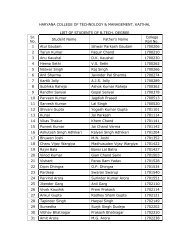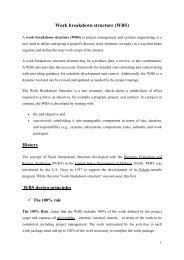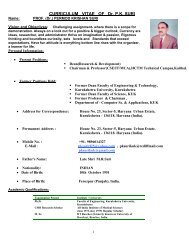You also want an ePaper? Increase the reach of your titles
YUMPU automatically turns print PDFs into web optimized ePapers that Google loves.
Traversal<br />
LECTURE NOTES OF ADVANCED DATA STRUCTURE (MT-CSE 110)<br />
The above tree is neither a sorted nor a balanced binary tree<br />
Compared to linear data structures like linked lists and one dimensional<br />
arrays, which have only one logical means of traversal, tree structures can be<br />
traversed in many different ways. Starting at the root of a binary tree, there are<br />
three main steps that can be performed and the order in which they are<br />
performed defines the traversal type. These steps (in no particular order) are:<br />
performing an action on the current node (referred to as "visiting" the node),<br />
traversing to the left child node, and traversing to the right child node. Thus the<br />
process is most easily described through recursion.<br />
Traversing Operations:‐<br />
<strong>1.</strong> Pre‐Order Traversal<br />
2. In‐Order Traversal<br />
3. Post‐Order Traversal<br />
Pre‐Order Traversal: To traverse a non‐empty binary tree in preorder, perform<br />
the following operations recursively at each node, starting with the root node:<br />
<strong>1.</strong> Visit the node.<br />
2. Traverse the left subtree.<br />
3. Traverse the right subtree.<br />
(This is also called Depth‐first traversal.)<br />
In‐Order Traversal: To traverse a non‐empty binary tree in inorder, perform the<br />
following operations recursively at each node:<br />
<strong>1.</strong> Traverse the left subtree.<br />
2. Visit the node.<br />
3. Traverse the right subtree.<br />
(This is also called Symmetric traversal.)<br />
Prepared By :<br />
Er. Harvinder Singh<br />
Assist Prof., CSE, H.C.T.M (Kaithal) Page ‐ 194 ‐







